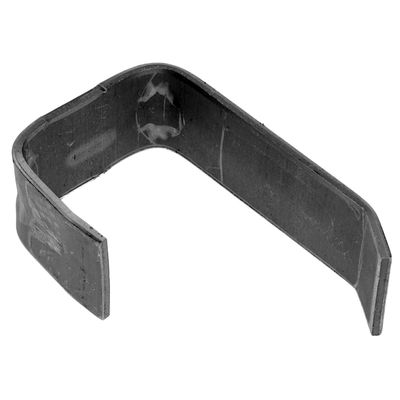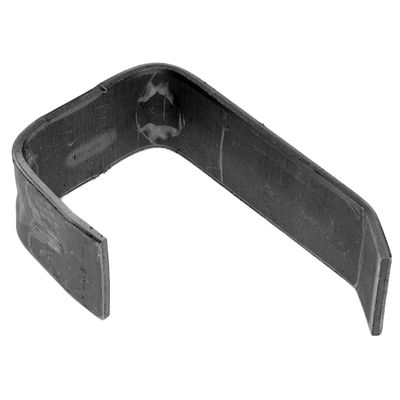Answer
Aug 28, 2024 - 04:10 PM
Identifying whether your Walker Exhaust 36393 Exhaust System Hanger is bad involves looking for specific signs and symptoms that indicate wear, damage, or failure. The exhaust hanger plays a crucial role in supporting the exhaust system, minimizing vibrations, and keeping the exhaust components properly aligned. A faulty or damaged hanger can lead to various issues, such as noise, exhaust leaks, and damage to the exhaust components.
Signs That Your Walker Exhaust 36393 Exhaust System Hanger May Be Bad:-
Excessive Noise and Vibration:
- One of the most common signs of a bad exhaust hanger is increased noise and vibration coming from the exhaust system. If the hanger is broken, loose, or worn out, it may fail to hold the exhaust system securely in place, causing the exhaust pipes or muffler to vibrate or rattle against the vehicle's underbody.
- You may hear banging, clunking, or rattling noises when driving over bumps, accelerating, or decelerating, which could indicate a loose or damaged hanger.
-
Sagging or Misaligned Exhaust System:
- A faulty exhaust hanger may cause parts of the exhaust system to sag or hang lower than usual. If you notice that the exhaust pipes, muffler, or tailpipe are not properly aligned or appear to be hanging closer to the ground than they should be, it could be due to a broken or stretched hanger that is no longer providing adequate support.
- A sagging exhaust system can also lead to ground clearance issues, where the exhaust may scrape or drag on speed bumps, driveways, or uneven surfaces.
-
Visible Damage or Wear:
- Inspect the exhaust hangers visually for any signs of damage or wear. Look for cracks, tears, or significant stretching in the rubber components of the hanger, which can indicate that the hanger is no longer able to provide proper support.
- If the hanger is made of metal or has metal components, check for rust, corrosion, or broken welds that could compromise its strength and functionality.
-
Exhaust Leaks or Fumes:
- A damaged or missing hanger can cause the exhaust system to shift or move out of its proper position, potentially leading to exhaust leaks where the pipes connect. If you notice an unusual exhaust smell or see smoke or fumes coming from areas under the vehicle other than the tailpipe, it could be due to a loose or misaligned exhaust caused by a faulty hanger.
- Exhaust leaks can pose a serious safety risk as they may allow harmful fumes, such as carbon monoxide, to enter the cabin of the vehicle.
-
Increased Engine Noise:
- If the exhaust system is not properly supported, you may hear increased engine noise or a louder exhaust note. This could result from exhaust components vibrating against the undercarriage or being misaligned, allowing more noise to escape.
-
Unusual Exhaust Movement:
- If you notice that the exhaust system moves excessively when you gently shake or tap it, this could indicate that the hanger is no longer securely holding the exhaust in place. The exhaust system should have minimal movement when properly supported by intact hangers.
-
Check Engine Light or Exhaust Warning Light:
- In some vehicles, a faulty exhaust hanger that causes significant movement or misalignment may lead to sensor errors or exhaust system faults, triggering the check engine light or a specific exhaust warning light on the dashboard.
-
Visually Inspect the Hangers:
- Safely raise the vehicle using a jack and jack stands or a car lift to access the underside. Make sure the vehicle is on a level surface and securely supported before crawling underneath.
- Locate the exhaust hangers along the length of the exhaust system, typically found near the muffler, exhaust pipes, and catalytic converter. Inspect each hanger for signs of wear, cracks, tears, rust, or corrosion.
-
Check for Proper Alignment and Clearance:
- Ensure that the exhaust system is properly aligned and that there is adequate clearance between the exhaust pipes and the vehicle's underbody or other components. Misalignment or sagging could indicate a problem with one or more hangers.
-
Test for Excessive Movement:
- Gently shake or push the exhaust system to see if it moves excessively. If there is significant movement or the exhaust system appears to shift or sway easily, it could be due to a faulty hanger that is no longer holding the system securely.
-
Listen for Noises While Driving:
- Drive the vehicle over rough or uneven surfaces, paying attention to any unusual noises, such as rattling, banging, or clunking. These sounds could indicate a loose or broken hanger allowing the exhaust system to move excessively.
-
Check for Exhaust Leaks:
- With the engine running, listen for any hissing or popping sounds that could indicate an exhaust leak caused by misalignment or excessive movement due to a bad hanger. Also, inspect for any visible signs of exhaust fumes escaping from areas other than the tailpipe.
- Replace the Hanger: If you identify a bad exhaust hanger, it is essential to replace it promptly to prevent further damage to the exhaust system and maintain safe and quiet vehicle operation. Use a direct-fit replacement hanger, such as the Walker Exhaust 36393, to ensure proper fit and function.
- Inspect Other Exhaust Components: While replacing the hanger, inspect other exhaust components, such as the pipes, muffler, and catalytic converter, for any signs of damage or wear that may need attention.
- Consult a Professional Mechanic: If you are unsure about inspecting or replacing the exhaust hanger, or if you suspect additional issues with the exhaust system, consider consulting a professional mechanic for a thorough inspection and repair.
A bad Walker Exhaust 36393 Exhaust System Hanger can cause several issues, including noise, vibration, exhaust leaks, and damage to the exhaust system. By recognizing the signs of a faulty hanger and performing a thorough inspection, you can identify and address the problem promptly, ensuring your vehicle's exhaust system remains securely supported and functions correctly.





Add New Comment